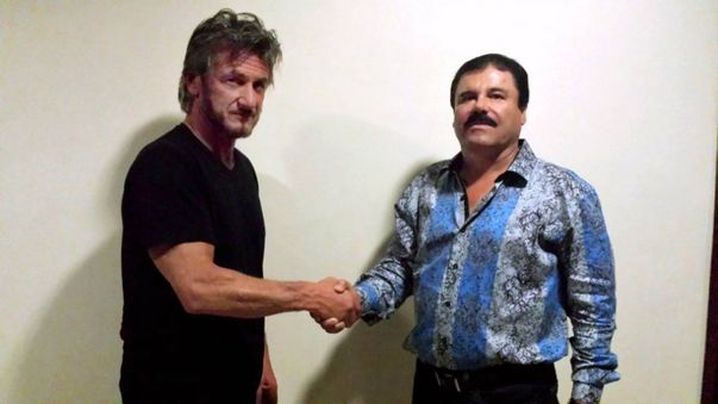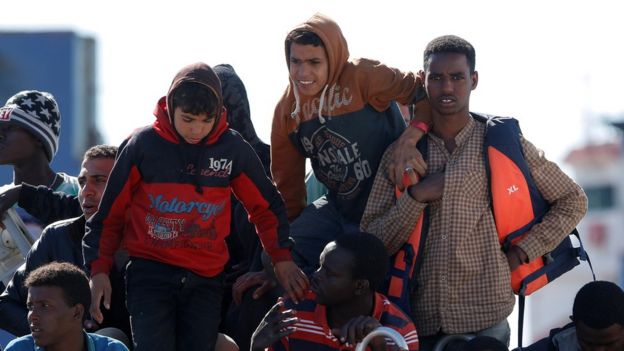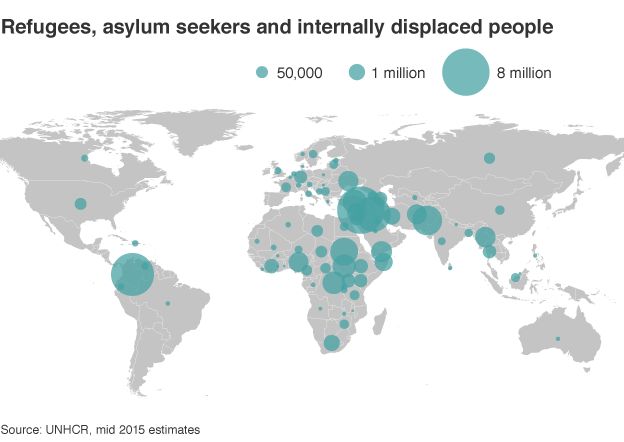High court rules non-U.S. citizens can be deported if convicted of minor crimes
WASHINGTON (AP) – The Supreme Court is making it easier for the government to deport or otherwise remove people who are not U.S. citizens if they are convicted of seemingly minor state crimes.
The justices ruled 5-3 Thursday that a man who spent 23 years living in New York as a lawful permanent resident can be barred from re-entering the country because of a 1999 conviction for attempted arson.
George Luna Torres had served one day in prison and five years of probation after pleading guilty in state court but otherwise had a clean record since his parents brought him into the country from the Dominican Republic in 1983.
But the government argued that the state law conviction was equivalent to an aggravated felony for purposes of immigration law.
Under immigration law, a lawful permanent resident can be deported or denied re-entry to the United States after being convicted of an aggravated felony. Those offenses include certain federal crimes as well as state offenses that share the same elements.
Luna argued that the federal crime of arson is different from the state version because it must involve interstate commerce.
Writing for the court, Justice Elena Kagan said that is simply a technical difference needed to give Congress authority over arson crimes and not a meaningful distinction. She said Luna’s argument would also exclude more serious state crimes, such as kidnapping, from affecting immigration status simply because a kidnapper failed to cross state lines.
“The national, local or foreign character of a crime has no bearing on whether it is grave enough to warrant an alien’s automatic removal,” Kagan said.
In dissent, Justice Sonia Sotomayor said the majority was ignoring a strict textual reading of the federal law, which includes interstate commerce as part of the crime.
“An element is an element, and I would not so lightly strip a federal statute of one,” Sotomayor said.
She was joined by Justices Clarence Thomas and Stephen Breyer. *****
Mexican Airline Offering Migrants Free Airfare to Texas Border
Two foreign airline companies have begun offering steep discounts to Cuban migrants–set for border crossing into western Texas–as thousands rush to the United States in the aftermath of thawing relations with the communist island. Children under age 11 fly free of charge.
The Panamanian government confirmed to the Associated Press Wednesday that Panama City-based Copa Airlines and Mexico’s Global Air are now offering roughly 30 percent discounts for adult Cuban migrants hoping to cross into the United States with children enjoying complimentary seats. Since May 9, the airlines have reported that almost 2,500 have been shuttled to Ciudad Juarez for easy crossing into El Paso thereafter. An estimated 1,300 await flights booked in the weeks ahead under the promotion. More here from Breitbart.
Immigrants must pass stringent eligibility requirements in order to naturalize. Naturalization is not an easy process. In order to become a U.S. citizen, an immigrant must:
- First reside in the United States continuously for five years as a Legal Permanent Resident (three years in the case of the spouse of a U.S. citizen).
- Be of “good moral character,” as determined by a criminal background check with the FBI.
- Be proficient in spoken and written English.
- Demonstrate a basic understanding of U.S. government and history.
- Take an Oath of Allegiance to the United States, its Constitution and laws, and renounce allegiance to any other nation.
Latino immigrants applying for U.S. citizenship in record numbers thanks to Trump
Donald Trump’s presidential campaign may actually be empowering the Latino vote.
No, really. At least that’s what a number of non-profit organizations and even the White House are working toward.
The Republican candidate’s harsh words toward immigrants and repeated campaign promises to deport millions of undocumented people and build an impermeable wall along the U.S.-Mexico border immediately propelled him to the front of the GOP pack, but it’s also driving a larger number of immigrants than usual to seek U.S. citizenship – and have a voice in whether or not Trump wins the White House this November.
Hortensia Villegas is a Colorado mother of two who immigrated from Mexico legally nearly 10 years ago. She never felt the need to become a citizen, she told the New York Times
, until Trump rose in the polls.
“I want to vote so Donald Trump won’t win,” Villegas, 32, told the paper at a Denver union hall where volunteers were helping hundreds of immigrants to fill out citizenship applications. “He doesn’t like us.”
And Villegas is not alone. Her sister and parents, as well as the parents of her husband – Miguel Garfío, who is a U.S. citizen by virtue of having been born in Colorado –are part of the crush of Latino immigrants who are trying to naturalize in time to vote this year.
Applications for citizenship were up in the six months through the end of January by 14 percent over the same time frame the previous year, the Times reported. Activists say that the numbers are growing by the week, estimating that the total applications for fiscal year 2016, which lasts until the end of September, could wind up close to a million.
That’s a 20 percent increase over previous years.
Traditionally, Mexican immigrants have sought citizenship at lower rates than others – according to Pew Research Center data, 36 percent of eligible Mexicans in recent years have become citizens, compared to 68 percent of immigrants overall.
That may be changing, thanks to Trump.
FoxLatino: Maria Polanco, a Honduran migrant who has lived in Nevada for 26 years but is only now applying for citizenship, told the Guardian recently
, “We [immigrants] are not perfect, but the majority of us are not what Donald Trump says. We came looking for better opportunities for us and our kids. My great pride is that my daughter graduated from college – I don’t think she could’ve done that in my country.”
“People who are eligible are really feeling the urgency to get out there,” Tara Raghuveer, the deputy director of the National Partnership for New Americans, told the Times. “They are worried by the prospect that someone who is running for president has said hateful things.”
“This is a big deal,” Jocelyn Sida of Mi Familia Vota, told the Guardian. “We as Latinos are always being told that we’re taking jobs or we’re anchor babies, and all these things are very hurtful. It’s getting to the point where folks are frustrated with that type of rhetoric. They realize the only way they can stop this is by getting involved civically.”
Labor unions and NGOs like the National Partnership are the main actors providing assistance to those of the 8.8 million non-citizen immigrants who may want to naturalize, but they are not alone.
The White House launched a national campaign in September to help people apply for citizenship, setting up “citizen corners” at public libraries and recruiting prominent immigrants like 1980s pitching star Fernando Valenzuela and Spanish chef José Andrés for ads.
Last week, $10 million dollars in federal grants were promised to NGOs helping immigrants through the application process.
Many conservatives see it as a blatant effort to expand Democratic support in battleground states with large numbers of immigrants like Florida, Colorado and Nevada.
“I certainly don’t care what party they register with; I just want them to become citizens,” said Leon Rodriguez, director of the Department of Homeland Security’s U.S. Citizenship and Immigration Service (USCIS), told the times.
The candidate himself has long suggested that he’ll win the Latino vote, and his campaign spokesperson, Hope Hicks, told the Times, “No one will benefit more from Mr. Trump’s pro-worker immigration reforms than the millions of immigrants who already call America home.”
Mary Victorio, 22, a Mexican-born student at the University of Colorado Denver, told the newspaper that while she didn’t support him politically, she was grateful to Trump. “He gave us that extra push we needed to get ready to vote, to prove to people who see us negatively they are wrong.”

 Previous flights for the same day.
Previous flights for the same day.
 Source:
Source: 


